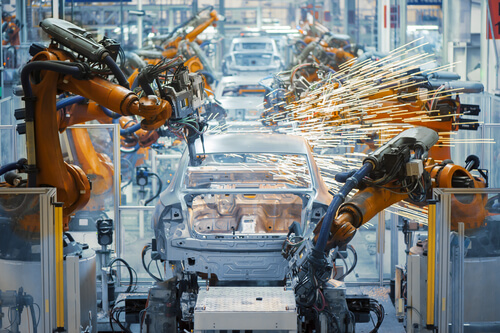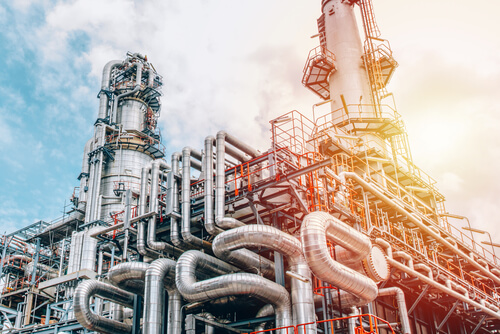
Challenges faced by today’s managers include dealing with global and local processes in a profitable and safe way, taking into account the need for their continuous improvement. Critical business challenges are interdependent – if equipment availability suffers, then production levels, costs and profits also suffer. Various and complex challenges require making decisions. Effectiveness and relevance of these decisions significantly depend on the quality of the information already possessed and its availability at the right time. Tools based on artificial intelligence (AI), which are developed and offered by our company, perfectly support industrial enterprises in the gradual achievement of digital operational excellence




The energy sector faces global challenges caused by deep changes occurring in its environment. New technologies, a change in the work regime of generating units (regulatory work, frequent shutdowns and start-ups), the power market and the constantly growing share of renewable energy (especially wind energy) mean that existing generating units must operate in a regime, for which they were not designed. Therefore, they are increasingly vulnerable to failure.
In order to meet the needs of our clients from the energy industry, we implement innovative solutions in the area of energy generation, transmission and distribution that support the digital transformation of enterprises. We solve (old and new) problems with the use of tools adequate to the scale of the problem – new technologies based on artificial intelligence that enable organizations to – effectively – respond to emerging threats, be informed in advance about their potential occurrence and learn how to avoid them or minimize the effects of their occurrence.

Project: implementation of Predictive Maintenance strategy for the generating unit
Challenge
The key task of energy companies is to ensure a stable and uninterrupted level of energy supply. Failures of machines can cause weeks of downtime and (consequently) huge financial losses. The objective of cooperation between companies was to minimize the number of failures in the generating unit (610 MW) at the power plant. Due to heavy operating conditions inside the fluidized-bed boiler, there were reductions in cross-sections of pipe walls with water under high-pressure. This led to explosions and damage in the inner part of the boiler and (as a consequence) costly downtime.
Benefits
The PdM solution is able to predict 100% of failures within a time horizon (3-17 hours). It can indicate the place of failure. This is a faster and more accurate view of the machine’s operation than any other monitoring system.
The predictive diagnostics system in the form of the RSIMS (Reliability Solutions Intelligence Maintenance System) platform, based on artificial intelligence, reduces costs of removing failures. Thanks to additional hours, during which the generating unit may be available, it increases revenues from the operational power reserve and revenues from the energy market.

Wind power must still compete with conventional generation sources on a cost basis. That is why wind turbines’ operators are facing the following challenges:
Monitored components:
The manufacturing industry, despite the fact that it includes such diverse industries as the automotive, engineering, pulp and paper, shipbuilding and many others sectors, mainly covers mass production, for which common challenges are: reduction of costs while increasing productivity, introduction of a high level of automation and mechanization, as well as high production flexibility and quick response to market expectations.
The speed of fitting for production lines, production of goods in individualized short series and decentralization of production are normal activities that significantly affect a company’s position in a highly competitive market.

Monitored components:
– motor
– transmission
– Master&Slave Drive : motor, transmission, wheel
The proven results and benefits we deliver
Chemical and petrochemical plants are characterized by a multitude of technological installations, complexity of production processes and a large variety of end products. Despite this diversity, the common objective is to conduct processes in the safest, the most efficient and the most profitable way. Chemical installations are equipped with a variety of critical machines and devices: industrial furnaces, reactors, columns, tanks, silos, compressors, blowers, driers, centrifuges, pumps, extruders, heat exchangers, chillers, evaporators and much more.
In order to achieve the overriding business targets, all these devices must work reliably, because the failure of a single device often has a cascade impact on the work of entire technological lines, and as a result – on the operation of the whole plant (or even a group of plants).

Project: implementation of Predictive Maintenance strategy for a steam turbine
Challenge
Quantities of equivalent gas supplied in the reforming process were too high in relation to expectations in terms of maintaining production indicators in appropriate ranges, including in particular objectives connected with the maximization of the amount of produced mixture of hydrogen and nitrogen. The reforming process consisted of four successive blocks. In each of these blocks, several different variables were controlled. The aim of the project was to optimize the installation’s operating process in a way that would minimize gas consumption.
Benefits
The adopted methods of metamodeling enabled the acquisition of knowledge about the course of the process, while the prepared optimization algorithm developed a solution that enabled the reduction of gas consumption by 1.35%.
The implementation of an innovative predictive maintenance system with the use of artificial intelligence forecasts upcoming failures with 98% of accuracy. RS solutions give unlimited possibilities to control the operation of machines, get insights into their condition and enable rational production planning, which produces a significant increase in the efficiency of the company in all aspects of its functioning. The RSIMS system, combined with expert knowledge is a guarantee of the highest quality of services and professional implementation of even the most comprehensive projects.

The sector of food and drink production is inherently conservative when it comes to the implementation of modern technologies that support production processes and maintenance. This is often explained by the “specificity” of tasks conducted by these plants associated with the restrictive safety and hygiene standards.
As a result, it is difficult for managers in these enterprises to accept new solutions, especially if the current production process (conducted in accordance with the determined practices) does not generate problems. Furthermore, in many enterprises, there is a misconception about the costs of modern solutions, which also effectively blocks the decision-making process in this regard.

The implementation of production plans is one of the basic goals that determines the efficiency of the production process. Unpredictable failures of the warehouse stacker crane caused a reduction in warehouse efficiency and generated unnecessary, unplanned direct and indirect costs connected with the need to repair this device.
Benefits
During the first few months of operation, the system helped in the detection of two faults and enabled managers to detect anomalies in the operation of the system. Currently, thanks to regular data reviews, the system allows a deeper insight into the operation of the stacker crane and distinction of emergency anomalies from non-significant events
Currently, M-Logistic is able to determine the risk of the stacker crane’s failure in real time and make effective and quick business decisions. This has led to an increase in the warehouse’s efficiency.

Monitored components:
– motor
– transmission
– Master&Slave Drive : motor, transmission, wheel
The proven results and benefits we deliver
The oil and gas extraction industry is a rapidly developing industrial sector. For this sector, human safety and the environment are treated as a priority. The safety and efficiency of production systems is largely dependent on applied technology. A key parameter of this technology is its high reliability.
Growing challenges in the field of safety and reliability require the use of modern methods of monitoring and diagnostics of all key technological devices and installations, including solutions informing management about potential hazards in advance to take preventive action. Failure in this respect may be the cause of serious accidents resulting in environmental pollution.

 Reliability Solutions B.V.
Reliability Solutions B.V.

